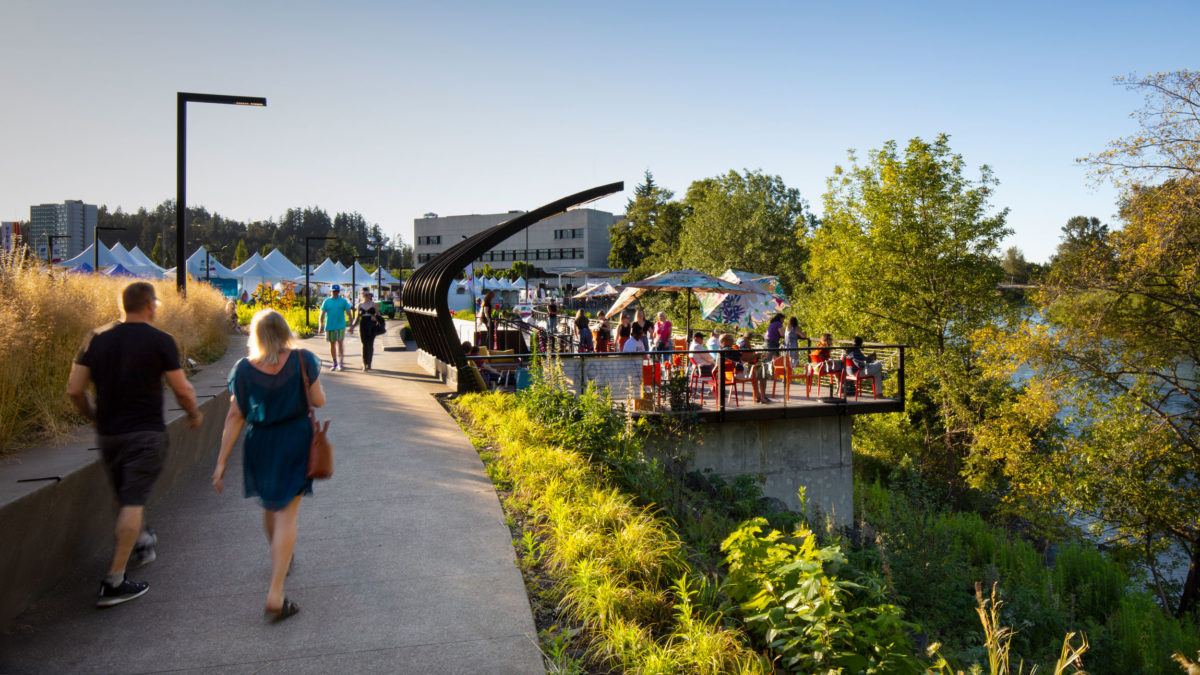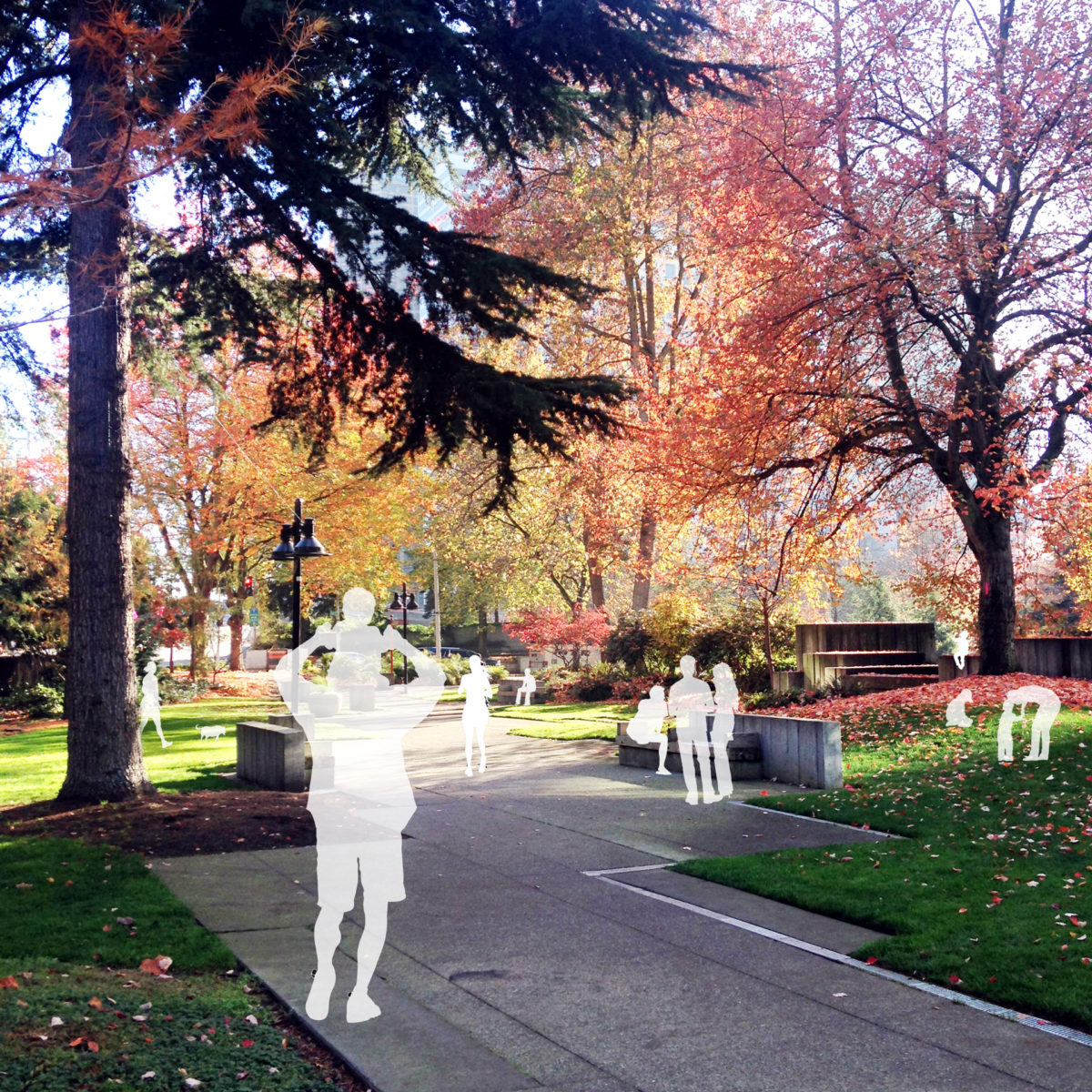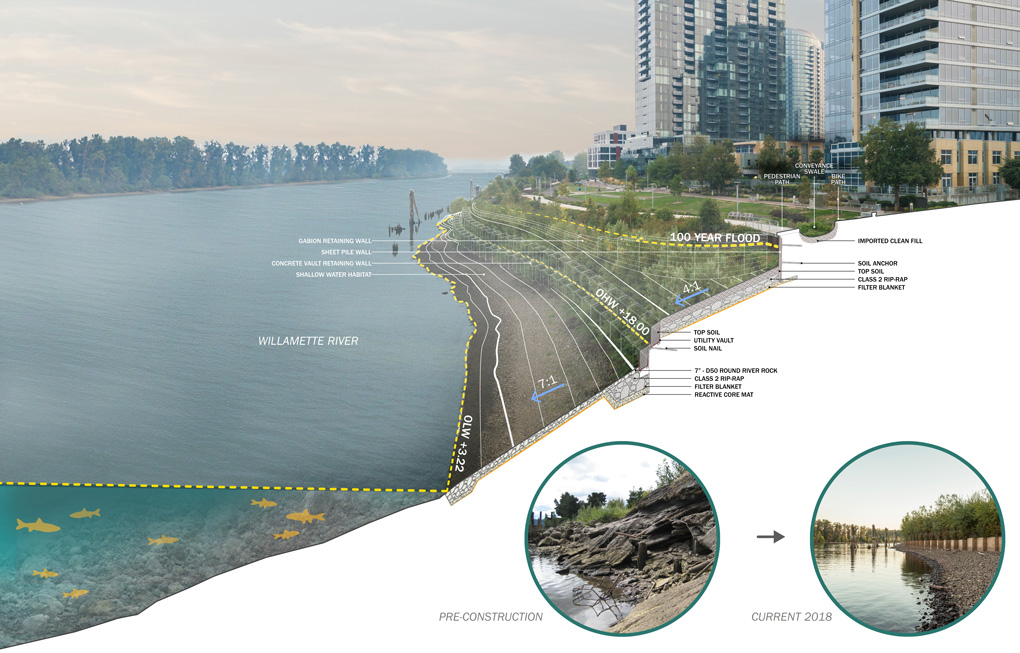Walker Macy has just begun work on construction documents for the Freeway Park Improvement Project, which will restore and revitalize this notable modernist landmark designed by Lawrence Halprin and Angela Danadjieva. Freeway Park was the first park to be built over a freeway, and was designed to enhance urban life through environmental experience, merging the energy of the city with the drama and lushness of the Pacific Northwest. Since it opened in 1976, downtown Seattle has changed substantially, the park has matured, and aspects have fallen into disrepair.
We began the design process by engaging a panel of Halprin experts and developed a master plan aimed at bringing Freeway Park into a new era. The plan is centered on thoughtful and restrained improvements that make the park more welcoming and intuitive to explore: park entrances that are more identifiable and accessible, improved access to the fountains, assessment of fountain water quality and flow, pruning and removal of overgrown vegetation to restore key views, new lighting and signage, and repairs and restoration of park amenities, infrastructure, and planting. The master plan aims to reconnect the park to its evolving city context, bring people back to the park, and restore its role as a centerpiece of Seattle’s park system and an icon of landscape architecture.
Phase 1 of design and construction is focused on restoring the quality and enjoyment of Seneca Plaza, the heart of the park. A new park welcome building at the back of the plaza will allow Freeway Park Association staff to provide visitor orientation, outreach, and support events and activities. Phase 1 also includes key improvements to other areas of the park such as the restoration of existing restrooms and updated lighting.
Freeway Park is listed on the National Register of Historic Places, and improvements are subject to review and approval by the Washington State Historic Preservation Officer. The park has also been nominated a City of Seattle Landmark.


